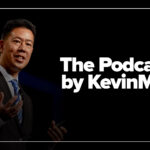The alarming relationship between artificial intelligence and adolescent body dysmorphia
That is what the American Health Law Association called the global increase in social media usage: an epidemic.
Indeed, social media usage and reliance, especially by youth, is becoming a mental health phenomenon quickly escalating out of control.
Nearly 25 percent of youth report spending over four hours on social media daily, with 46 percent of adolescents claiming that social media compromised their body image. Alarmingly, an estimated 80 percent of young girls state that social media adversely affects their self-perception, contributing to the rise of eating disorders within the United States.
Eating disorder content thrives on social media, hiding under the guise of “wellness advice” or “healthy lifestyle habits”. Yet, “thinspiration” camouflaged as fitness motivation only worsens youth mental health by subconsciously motivating teenagers to intentionally starve themselves. In fact, long-term exposure to such phrases can actually increase one’s chances of developing an eating disorder. One study confirmed that 49 percent of Instagram users who followed health-food accounts display symptoms of anorexia nervosa. Additionally, as one’s time spent on social media increases, their likelihood of developing body dysmorphic disorder increases as well.
In our increasingly technology-heavy world, social media is quickly becoming a poison for youth mental health, especially with the rise of AI in all forms.
Purely AI-produced content skews reality on social media.
Feyza Nur Özkan from Istanbul University notes how AI has made the situation worse by generating beauty standards that are unattainable and digitally crafted by software. The posting of AI-produced and AI-edited images has become normalized, further ingraining insecurities among youth, as they often believe these images are what “beauty” looks like online.
Objectively, distinguishing real content from AI-generated images is becoming increasingly difficult as the “realness” of AI-produced content improves. For instance, researchers from the University of Waterloo in Canada determined that nearly 40 percent of people cannot distinguish AI-generated images of people from real images of humans.
Thus, in the context of social media, it becomes easier for influencers and for companies to put out AI-generated images of clear-skinned faces and hourglass figures with the goal of flaunting a positive body image, without anyone giving the realness of such images a second thought.
AI does not just stop at filters; it is now creating entirely new influencers, too. Digital avatars, like Lu Do Magulu and Lil Miquela are more than just marketing tools. Racking up millions of followers, these “influencers” are creating a dangerous societal beauty standard, significantly elevating risks of body-image struggles and disordered eating through comparisons.
How filters alter our bodies and our body image.
Further exacerbating this issue is the popularity of filters. Filters attempt to make facial features and physical traits more “refined” and “perfect”, portraying the false image that a body’s natural state is undesirable. With just a few taps, filters can instantly change someone’s entire appearance, and their self-perception as well.
One of the most extreme examples is TikTok’s “Bold Glamour” filter. Used in over 91 million videos, it sculpts chins, thins noses, lifts cheekbones, and brightens eyes with just a click. Powered by generative adversarial network, an AI technique that takes two images to redraw your face, this filter makes it nearly impossible to tell what is real and what is digitally manufactured.
Teenagers, already vulnerable to comparison, start to believe this is what they should look like. In a 2019 survey, 72 percent of plastic surgeons reported that teen patients were seeking cosmetic procedures to resemble their filtered selves.
With AI-based filters that add muscle and abs to a photo in seconds, even male influencers can portray their body falsely, driving youth followers to believe they do not look “strong enough.” While women still make up the majority of cosmetic procedure patients, research shows body image concerns are rising sharply among young men. A recent Canadian study found a strong link between frequent filter use and muscle dysmorphia, with young men obsessing over being “not muscular enough” to meet the expectations of gym culture. This pressure can lead to unhealthy behaviors like extreme workout regimens, overtraining injuries, and restrictive eating patterns in an effort to chase an unrealistic ideal.
We need to worry about algorithmic amplification.
Social media is preying on teenagers’ insecurities. Recommendation algorithms, such as TikTok’s “For You” feed, Instagram’s Explore page, and YouTube’s “Up Next” system, use AI models like collaborative filtering, reinforcement learning, and deep neural networks to decide what content appears on a user’s screen. These systems are engineered to maximize engagement, prioritizing whatever triggers the strongest responses, even when that content poses psychological risks. All it takes is a single like on a mental health topic video, and in less than 20 minutes, users’ feed will be dominated by videos about depression and self-harm.
Even when platforms claim to regulate pro-eating disorder content, it does not really disappear. For instance, TikTok claims to have banned #SkinnyTok, yet individuals like Megan Jayne Crabbe (author of the recently published book We Do Not Make Ourselves Smaller Here) not that it is harder to break through on social media with messaging that normalizes bigger bodies.
Furthermore, users can easily learn to sidestep social media rules and bans, replacing letters with coded language. Thus, the algorithm continues boosting what performs best, no matter the cost to mental and physical health.
The result is a toxic echo chamber where disordered habits become normalized. And with each scroll, like, and follow, the harder it becomes to climb out of this dangerous trap.
With this in mind, there is more than just body dysmorphia that is at risk. Heavier social media usage has been observed to predict lower life satisfaction in teens. Following “health-food” or diet accounts is predictive of developing anorexia, making it clear that there is a direct connection between the two.
Ultimately, the rise of AI-driven content, filters, and algorithmic amplification has made social media turn into more than just a pastime. It has become a silent driver of disordered eating, body dissatisfaction, and declining mental health in adolescents. Without accountability from platforms or broader societal intervention, such harmful patterns will continue to repeat, exacerbating the crisis of youth well being for years and years to come.
The authors, Aarav Agarwal, Diya Mankotia, Sahana Srikanth, Ketan Tamirisa, and Gaurish Agrawal, are affiliated with the Strategic Training Initiative for the Prevention of Eating Disorders (STRIPED) at the Harvard T.H. Chan School of Public Health, a public health initiative that leads national efforts to prevent eating disorders and address related health risks.



















![Why being your own financial planner is costing you millions [PODCAST]](https://kevinmd.com/wp-content/uploads/Design-1-190x100.jpg)

![Rebuilding the backbone of health care [PODCAST]](https://kevinmd.com/wp-content/uploads/Design-3-190x100.jpg)


